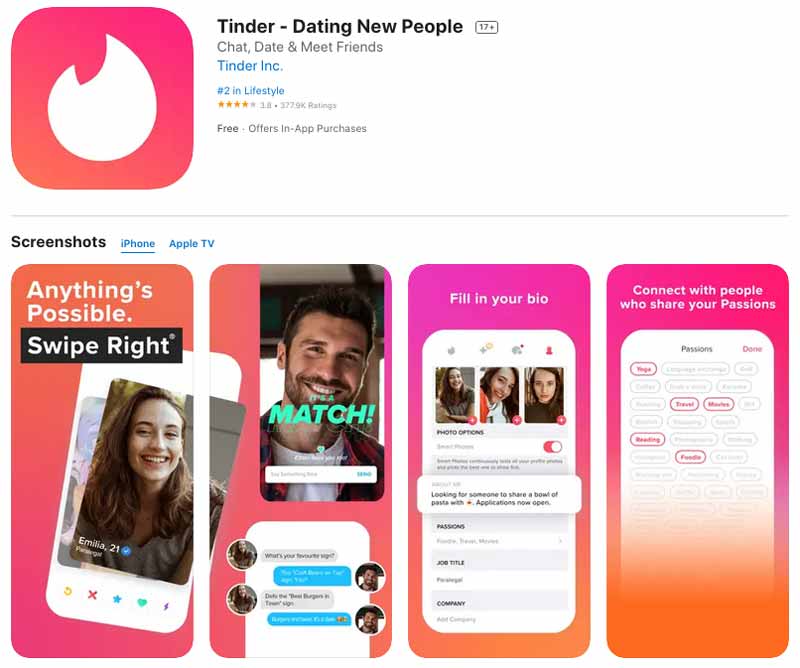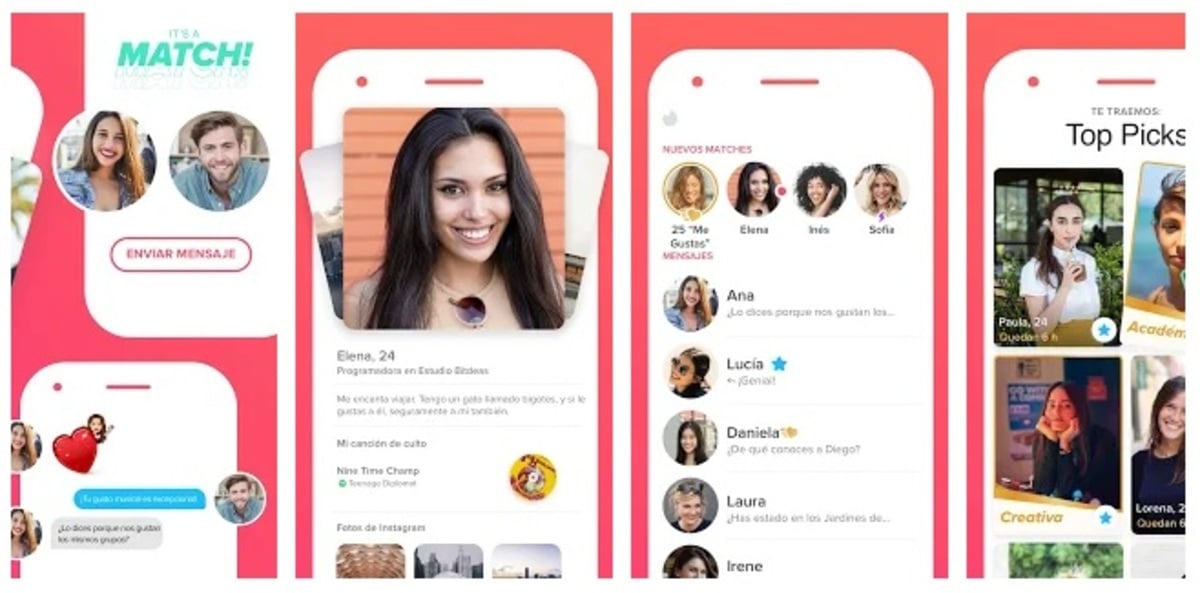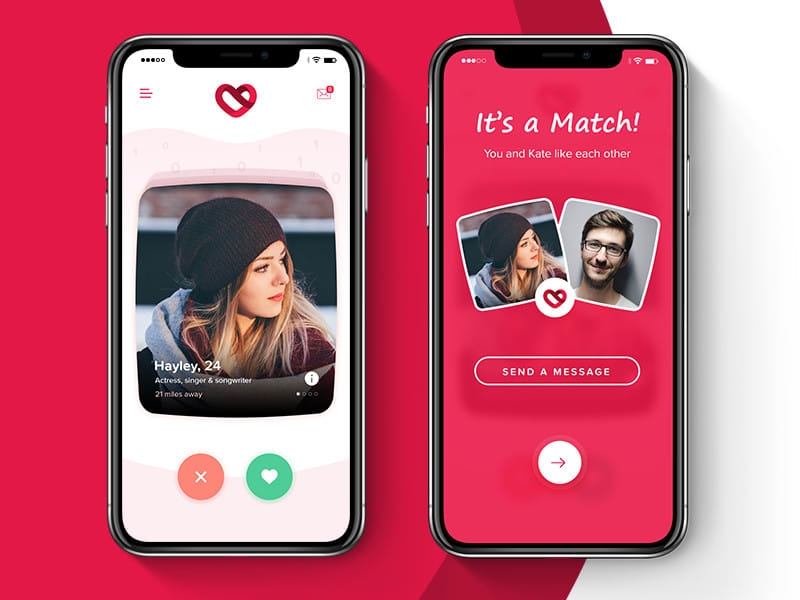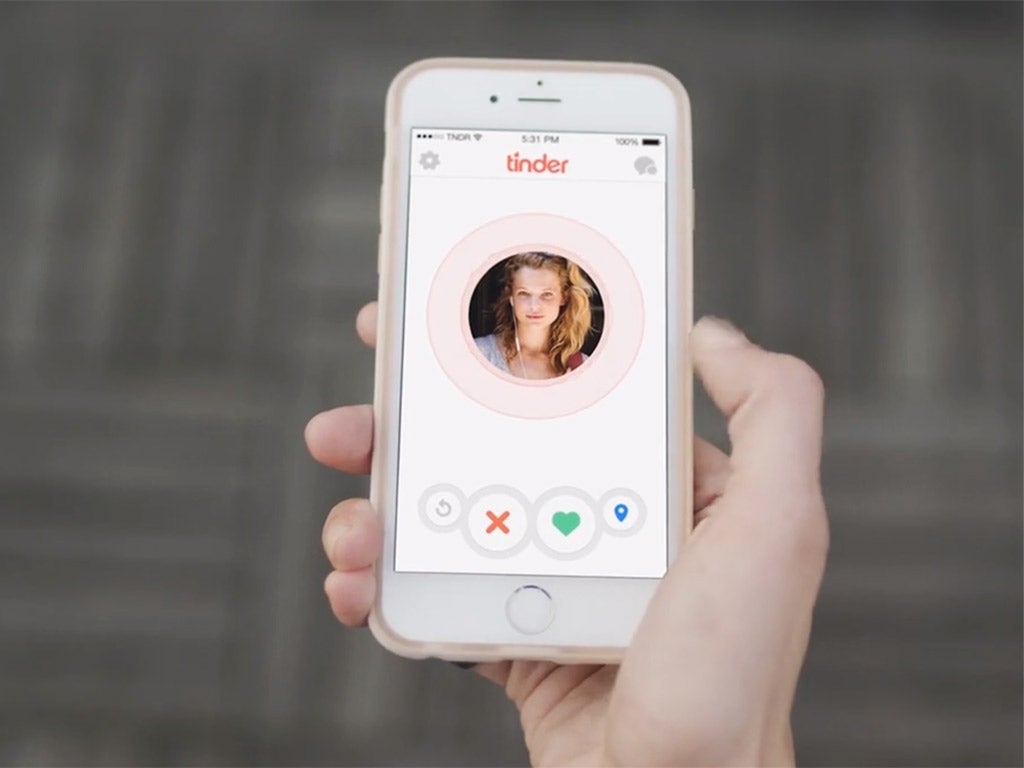The Moral Careers of Male Tinder Users: An Exploratory Sociological Analysis
1. Introduction
1.1. Men’s experiences on dating apps
Dating apps have become incredibly popular in recent years, providing new ways for people to connect romantically and sexually. However, men’s experiences on these platforms are shaped by certain factors that differ from women’s experiences. The gender distribution on many dating apps is highly unequal, with far more male users. This asymmetry means men face greater competition and often less matching success. Men’s motivations for using dating apps also show some distinct trends, with a greater emphasis on casual relationships. Their self-presentation and risks taken also reveal gendered patterns.
The uneven gender ratios on dating apps like Tinder are well-documented. Statistics indicate the user base is around three-quarters men among heterosexual users. For instance, a 2022 report found 76% of Tinder’s Android users were male in the US. The overabundance of men intensifies competition and disadvantage. Women get matches much more easily. One study found women matched with over 50% of profiles they swiped right on, while men’s match rate was far lower.

1.2. Research question
This paper investigates the following research question: What are the “moral careers” of male users on the Tinder dating app, and what factors shape their engagement? The concept of “moral careers,” drawn from sociology, will help illuminate men’s trajectories on Tinder, considering their motivations, activities, goals, and meanings made from use. Identifying common social pathways taken by male users can provide insight into how this technology is impacting dating behaviors and masculinities today.
The study utilizes the sociological concept of “moral careers” to uncover patterns in men’s use of Tinder over time. By examining how their motivations, actions, and perceptions evolve, we can understand the social forces that guide male Tinder users’ experiences. The research question focuses specifically on Tinder as it is one of the most popular dating apps among men. Investigating moral careers can reveal the potentially transformative social impacts this technology has on modern dating and masculine identities.
2. Tinder
2.1. Features and user activity
Tinder is a widely used dating app launched in 2012. Its signature swiping feature allows users to like or reject potential matches through simple left or right swipes. Matches are made when two users swipe right on each other. Tinder also shows users potential matches within their geographic radius. After matching, users can chat and arrange to meet up. Tinder promotes a game-like dynamic through its interface. Users can enhance their profiles with photos, biographical text, and other details. On Tinder, men generally swipe right more liberally to cast a wider net, while women are more selective.
The Tinder app introduced the trademark swiping mechanism to mobile dating. With a swipe left or right on a potential match’s profile, users can quickly sort through local options. If two users swipe right on each other, they become a match and can start messaging. Tinder also leverages geolocation technology to show users nearby matches. Its fun, gamified setup aims to increase engagement. Male Tinder users typically use more indiscriminate right-swiping approaches hoping for more matches, while women swipe more selectively.

2.2. User motivations
Research shows Tinder users have diverse motivations beyond just hookups or relationships. Some use it socially when traveling, out of boredom and curiosity, or to boost self-esteem through matches. The app’s accessibility and gamified style draw certain users. Tinder also facilitates meeting partners for sex and dating in a low-pressure way. Its versatility and ubiquity have contributed to its massive success.
Studies reveal Tinder users do not necessarily see the app as just for casual sex or finding love. Tinder can provide entertainment, pass time, satisfy curiosity about other users, and offer an ego boost through reciprocated interest. Its fun, game-like features pull in some users more than traditional dating sites. The low-stakes approach also appeals to those seeking relationships and sexual encounters. Tinder’s combination of multiple uses and user-friendly system explain why it has become the top dating app globally.
3. Men’s use of dating apps
3.1. Self-presentation and feedback
Men carefully negotiate their self-presentation on dating apps to appeal to ideals of masculine attractiveness. They receive validating or ego-bruising feedback through matches, likes, and interactions. Some heterosexual men emphasize sexual motives and share revealing photos to demonstrate masculinity. Gay men may tailor profiles for more romantic connections. Dating apps can negatively impact some male users’ body image and self-worth.
On dating apps, men tend to carefully curate their profiles to highlight attractiveness and machismo, sharing shirtless selfies or pictures emphasizing masculinity and strength. The external validation or rejection from other users through match rates, comments, and conversations impacts men’s self-esteem and confidence. Some heterosexual men overtly display sexuality to assert manliness, while homosexual men may downplay lust for romantic appeal. If men feel profiles misrepresent their actual attributes, these apps can damage body image.

3.2. Motivations and risks
Research finds men are more open about seeking casual sex on dating apps and take more risks, like meeting strangers. Men report less harassment but face other frustrations like low match rates for heterosexual users. Some use apps adventurously for variety and validation. But dissatisfaction and addiction are risks. Motivations evolve over time – a quest for casual sex may lead to a yearning for commitment. Apps make women more accessible to men, but also introduce new problems.
Studies show men more readily admit wanting casual sex from apps. Men also undertake more potentially dangerous actions like meeting alone with unfamiliar matches. While harassment is rarer, heterosexual men face annoyance from very low match and conversation rates. For some men, dating apps facilitate exciting sexual variety and esteem boosts through new conquests. But digital dating disappointment and habitually checking apps take a toll for some. Men’s motivations also change over time, with many eventually seeking meaningful relationships after hookup fatigue sets in. So while connecting to more women, apps also carry unforeseen troubles.
4. Analyzing social trajectories through the career concept
4.1. Goffman’s moral career
Sociologist Erving Goffman’s “moral career” concept examines how stigmatized individuals’ identities transform, often under institutional constraints. He studied mental patients’ loss of autonomy and identity reconstruction in asylums. Though less extreme, dating apps shape users’ identities and social capacities through their technological constraints and social feedback.
Goffman’s idea of “moral careers” analyzes people’s changing social and personal identities, especially for those facing stigma. He looked at mental asylum patients whose identities and agency were radically reshaped by institutionalization. While not as controlling, dating apps also guide users’ behaviors, values, and self-conceptions through their system design and social judgments received from others on the platform. The apps shape users’ “moral careers” around dating and intimacy.
4.2. Becker and Matza’s perspectives
Other sociologists like Howard Becker and David Matza also analyzed deviant “careers.” Becker highlighted how marijuana users advanced through social ties, justifying use. Matza identified themes like “affinity” for deviance and “signification” – making meaning from acts. Drawing on these theories helps uncover how apps socially shape men’s trajectories and identities regarding gender, dating, and intimacy.
Additional sociologists offered useful concepts for studying deviance “careers.” Becker examined how marijuana users progressed through stages, influenced by friendships and shared rationalizations. Matza outlined factors like deviance “affinity” and the “signification” or personal meanings individuals ascribe to their nonconforming acts. These insights can elucidate how apps cultivate specific social paths and self-conceptions for male users around masculinity, relationships, and sex.
5. Methods
5.1. Sociological survey
This study conducted 25 semi-structured interviews with self-identified male dating app users, including both heterosexual and homosexual men. They described their experiences and trajectories on apps like Tinder through open-ended questions. Most were Romanian, with some other nationalities included too. The sample provided in-depth insights into men’s dating app use.
The research involved qualitative sociological interviews with 25 male dating app users, including straight and gay men. In the semi-structured interviews, participants answered open-ended questions about their backgrounds, motivations, activities, experiences, and trajectories using apps like Tinder. The majority were Romanian, though some other nationalities participated too for diverse perspectives. This in-depth interview data gave nuanced understanding into men’s use of dating apps.
5.2. Qualitative content analysis
Additionally, 22 relevant firsthand accounts published by male dating app users on the platform Quora were analyzed. These provided supplementary perspectives. Together, the interviews and Quora data allowed identifying common “moral careers” adopted by male users.
The study also utilized qualitative content analysis of 22 dating app accounts posted on Quora by male users, which offered additional viewpoints. Drawing on both the interview data and these crowdsourced personal stories allowed the identification of prevalent “moral careers” that men follow on these dating apps. The combined datasets provided a robust foundation for uncovering patterns in male users’ trajectories.

6. Results
6.1. Five moral careers identified
Applying the moral career concept revealed five typical trajectories male users follow: serial dater, relationship-oriented dater, passive dater, episodic dater, and discredited dater. These categories emerged inductively from the data based on users’ motivations, activities, goals, and meanings made.
Utilizing the “moral career” theoretical lens surfaced five common social pathways men assume on dating apps: serial dater, relationship-oriented dater, passive dater, episodic dater, and discredited dater. These moral career categories inductively emerged from the qualitative data through coding users’ reported motivations, patterns of app use, goals, and significance attached to their experiences.
6.2. Characteristics of each career
While not definitive, these moral career types capture prominent patterns in men’s dating app use. Each involves distinct motivations and meanings. Trajectories often shift over time as well. Outcomes like matches shape trajectories but sociodemographic factors show little correlation.
These five careers represent prevalent but non-exhaustive trajectories taken by male dating app users. Each career encompasses unique motivations and signification of the dating app experience. Individuals may transition between careers over time. Match successes and failures strongly influence trajectories, though minimal correlation with sociodemographics emerged.
7. Serial daters
7.1. Exploration and validation
The “serial dater” career describes men who actively leverage Tinder’s abundant dating opportunities. They report a good number of matches and dates from the app. With flexible goals, serial daters playfully explore connections. The validation and excitement of matches and hookups fuel their sustained use.
Male “serial daters” on Tinder fully capitalize on the app’s ample dating possibilities. These users share they attain many matches and first dates through the platform. Without fixed long-term relationship ambitions, serial daters casually test out diverse romantic options. The ego boosts of reciprocated interest and sexual encounters motivate ongoing use.
7.2. Adopting new attitudes
For some serial daters, Tinder also builds confidence and changes attitudes about dating. They describe outgrowing nervousness and becoming emotionally detached to handle frequent rejection. Objectifying outlooks may emerge too. But boredom with endless matches causes some to later seek relationships.
Serial dating on Tinder can transform some men’s perspectives and capabilities around intimacy. These men detail overcoming approach anxiety and adopting detached mindsets to cope with recurrent letdowns. Dehumanizing views of women may take hold too among aggressive serial daters. However, monotony from excessive matches often reshapes serial daters’ motives toward relationships.
8. Relationship-oriented daters
8.1. Seeking commitment
Unlike serial daters, “relationship-oriented” men use Tinder to find a serious girlfriend or spouse. They take a selective approach and try building connections. But Tinder’s quick pace makes assessing compatibility difficult. And endless options impair committing to one match.
Relationship-oriented daters enter Tinder seeking lasting love rather than hookups. They swipe selectively and converse meaningfully to evaluate partners for serious relationships. Yet Tinder’s rapid-fire matching hinders forming deep bonds. The constant presence of other options also challenges moving a match toward commitment.
8.2. Satisfaction with outcomes
Outcomes vary for this group. Some successfully find lasting relationships quickly. But most report fruitless searches filled with superficiality. Disappointment often leads them to delete the app. Yet face-to-face dating still intimidates some after growing accustomed to Tinder’s ease.
Results differ among these relationship-focused men. A few luckily make quick connections leading to enduring partnerships. But most languish unsuccessfully amid insubstantial conversations. Their dissatisfaction commonly prompts deleting the app, though approaching people offline still proves daunting for some after Tinder’s frictionless matching.

9. Passive daters
9.1. Entertainment and browsing
“Passive daters” lose interest in actively pursuing dates on apps over time. They evolve into more detached users who swipe casually for entertainment or ego boosts. Without strong motivations, passive daters only occasionally chat or meet up with matches. Some primarily browse profiles almost voyeuristically.
The “passive dater” loses previous zeal for leveraging apps to find dates. These men come to apathetically swipe for diversion or self-validation. Lacking investment, passive daters infrequently message or see matches in real life. Some principally scroll through profiles as casual observers without intention to connect.
9.2. Lack of strong motivations
Passive daters may dabble on apps intermittently when bored without meaningful intentions. Previous frustrations on Tinder often drive this moral career. But peer influences or the apps’ addictive nature perpetuate use. Virtual engagements displace meeting dates for passive daters.
Passive daters float on dating apps aimlessly during lulls without sincere aims. Disillusioning experiences commonly precede passive use. However, boredom, peer pressure, or compulsiveness fuel ongoing passive swiping. For these men, hollow online exchanges supplant motivation to date matches.
10. Episodic daters
10.1. Traveling and temporary use
“Episodic” daters turn to Tinder for brief stints while traveling abroad to meet locals, improve cultural immersion, and find temporary companionship. The app conveniently facilitates contacts in unfamiliar places. Episodic use ceases upon returning home.
“Episodic daters” temporarily activate Tinder while vacationing overseas. They use it to conveniently meet locals, boost cultural experience, and locate travel companions. Tinder handily enables networking in unfamiliar settings. Episodic users delete the app after trips when its location-specific purpose has been served.

10.2. Marital dissatisfaction
In some cases, married men facing relationship problems episodically download dating apps like Tinder for an ego boost or to explore new romantic prospects. But ensuing guilt and the desire to refocus on their marriage typically lead to deleting the app.
Some married men experiencing marital woes may episodically try Tinder to feel desired again or flirt with different romantic possibilities. However, shame and recommitment to working on their marriage tend to quickly prompt removing the app. For them, Tinder provides a temporary outlet from marital stress.
11. Discredited Male Tinder Users
11.1. Low self-esteem and frustration
Unlike other categories, “discredited daters” struggle with few to no matches on Tinder, which damages their self-confidence. They feel invalidated and undeserving of intimacy. Discredited men criticize female users as superficial and the apps as biased.
“Discredited daters” uniquely report minimal Tinder matches, demolishing their self-assurance. Lack of interest from other users makes discredited daters feel unattractive and unworthy of affection. They fault women for superficiality and accuse the app’s system of gender bias against men like them. Ongoing rejection agonizes discredited daters.
11.2. Short-lived use and experiments
After brief periods of frustration, discredited daters usually abandon Tinder. Some desperately pay for premium features or create fake profiles to increase matches before quitting. Their experiences painfully confront them with perceived personal inadequacies and dating woes.
Following short stints of distress, most discredited daters deactivate Tinder. Some first desperately subscribe to paid upgrades or fabricate profiles, fruitlessly attempting to boost matches before inevitably leaving the app. Discredited daters’ journeys brutally expose disturbing self-perceptions and romantic bleakness for them.
12. Conclusion
12.1. Careers shaped by motivations and results
In summary, male Tinder users tend to follow one of five moral career trajectories, shaped largely by their motivations and match results. Favorable outcomes perpetuate usage, while disadvantageous ones discourage it. Evolving motivations also impact careers.
In conclusion, men’s paths on Tinder generally coalesce around five moral careers that hinge predominantly on users’ motivations and matching outcomes. Positive results through matches sustain app use, whereas unfavorable experiences diminish it. Shifting motivations across time also redirect moral careers for male users.
Sources:
